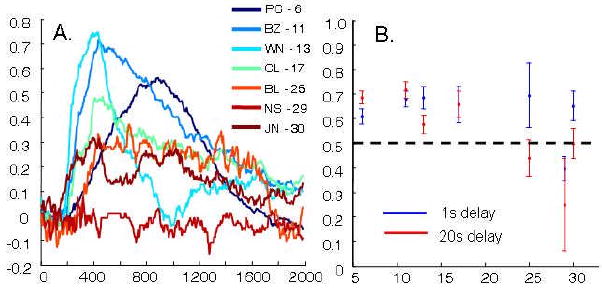Figure 8.

Novelty preference in aged animals was investigated after excluding trials with particularly fast (under 200ms) or slow (above 480ms) reaction times. A) Same as Figure 2A. The exclusion of abnormal reaction time trials increased the novelty preference for most of the test phase for both 24-year-old BL and the 30-year-old JN, but not the 29-year-old NS. B) Medians of the percent of time looking at the novel image at one-second delays (blue) and twenty-second delays (red) are plotted across monkey ages. Young monkeys show similar novelty preference scores for both delay periods. Both BL and JN have similar novelty preference scores as young animals in trials with shorter, one-second delays, while at the longer, twenty-second delays scores approximate chance. There is no correlation between novelty preference and age for trials with delays under 20 seconds, but there is for trials with twenty second delays, consistent with the hypothesis that aged monkeys have recognition impairments at longer delays.
